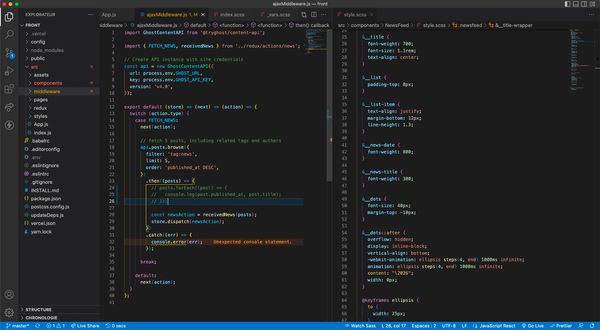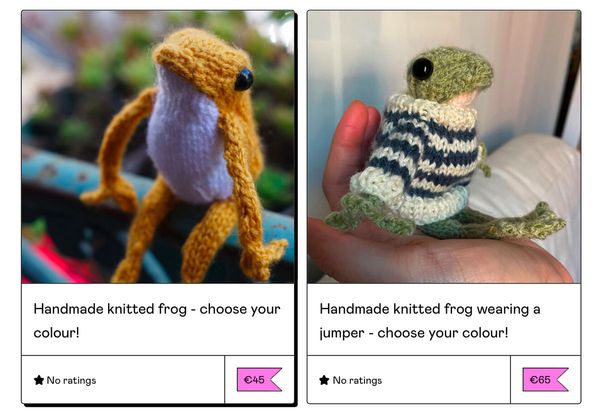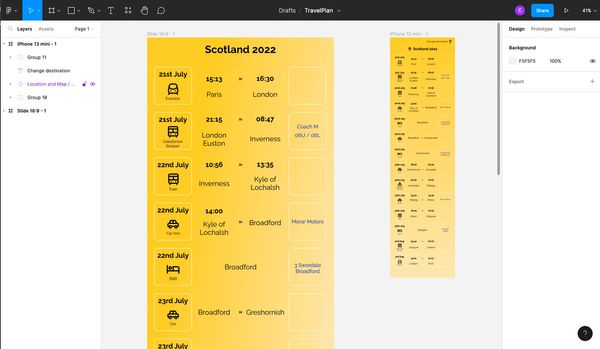My backstory
The accessories I was designing at the time were pouches and sleeves for electronic devices like smartphones, tablets, digital cameras and laptops. I was selling most of them to large retailers, and I was using my website as a catalogue but also as an e-commerce platform to sell to private individuals.
For the first version of my website, I used the content management system (CMS) Joomla coupled with the extension Virtuemart for e-commerce. Both are open source and working on their implementation on my own was my first programming experience with PHP and JavaScript, after having used HTML and CSS for a few years already.
Unfortunately, after 2 years my website was hacked, so I migrated my e-business to Prestashop, another open source e-commerce platform that was known to be more secure. It also had the advantage to be primarily dedicated to e-commerce, whereas Joomla was more headed towards publishing content. Because I was pregnant at the time and not far from giving birth to my son, I made an invitation to tender and provided an exhaustive 21-pages bill of specifications to the UI designers and developers who answered. After choosing the service providers, I managed the project and my new website was delivered just in time before Christmas, the busiest period of the year for my business.
If you're curious, you can read the functional specifications document I wrote by clicking on the link below :
After a few years, my e-business really started to grow and I didn't have time to manage the frequent updates and code reviews required by an open source solution. I wanted to focus on my core business, which was selling products to customers. In 2012, I migrated my shop once again to Shopify, an all-in-one commerce platform which has been my favourite e-commerce solution so far. I used it until 2015 when some personal life events called for a change of career, pushing me into giving up entrepreneurship and having a more classic 9-to-5 office job instead.
This lasted until last year, when I then had the opportunity to retrain myself and learn web development, one of the multiple things I really enjoyed doing when I was working in e-commerce. The other thing I liked was selling the products I designed and sometimes handcrafted myself, and that's something I would really love to do again today. The difference is that today, I don't want it to be my full-time job anymore, as I'm passionate about UX design and developing for the web, and I want to focus on this as a new career path. So how do you choose an appropriate e-commerce solution when selling your creations is just a side hustle ?
Review the context
Unlike the year when I started an online business, I'm not planning to sell knitted frogs for a living. But if I could sell them to some people and clear out my shelves a bit, I'm sure everybody in the house would be happy with the gain of space. What else am I planning to sell ? Bronze figurines and jewellery made out of metal clay, enamel pins based on my illustrations and pieces of my art printed on a variety of products and apparel by Printful, a drop-shipping company.
These last years, I had a personal website on Squarespace that included a blog and an e-commerce solution. But the lack of available options for customisation kind of took me away from it. It didn't feel like this space was mine, although the integration with Printful was quite good. Also, it has a monthly cost whether I make sales or not, due to a monthly subscription, which is a bit of a shame as I don't have time to market this site properly and that makes the ensuing traffic pretty low. Now that I have created my own fully customised blog on this platform (read this article to know more), I intend to cancel my subscription to Squarespace and reallocate its cost to other solutions better suited to my present needs.
Study the market for e-commerce solutions
When I first started working as an online seller, it was more than a decade ago. The market has changed since then, and many solutions that didn't exist in 2008 are now easily available. As I mentioned earlier, my own situation has changed too, and today I'm less interested by ultra complete e-commerce platforms and more by an easy solution that would allow me to make the occasional online sale.
Because most of my products are handmade or printed from my own illustrations, a marketplace like Etsy would be a perfect place to sell on. The fact that it's such a famous website allows sellers to benefit from their existing traffic without really doing any marketing for their own page. Also, Printful offers an automated integration API to easily connect to Etsy, so that makes it the perfect place to sell all of the types of products I'm making. The only black spot is that it's an external platform and like all marketplaces, competition is rife, it's harder to build a community of loyal customers and copycats are never far.
Another option would be to integrate a shopping cart directly on this blog. I could benefit from long-tail SEO, which is a technique for generating high-value organic website traffic that would happen thanks to the content I'm already writing for this blog. In other words, someone doing an online search for handmade knitted frogs and finding the article where I talk about knitting frogs myself would be a well-targeted potential customer, who would probably be willing to buy one of my frogs if there was a call-to-action button directly inside the post.
That could be a good complementary solution to having an Etsy shop, and so far I found 2 shopping cart providers that seem to be easy to implement on a Ghost blog, Snipcart and Gumroad.
Do the maths
Now that I have identified solutions that would meet my needs, the financial side is what will make a difference.
As I'm planning to sell my creations as a side hustle and not to become a full-time e-seller, I have to identify the solutions that will cost me the less money and will not be too time-consuming.
Etsy
Importing Printful products to Etsy is a one-click operation, very easy. Adding new handmade products on Etsy takes a bit more time as there are lots of fields to complete, but it's ok too, nothing too difficult here except taking nice photos - but that's something I'll have to do whatever platform I choose anyway. Then putting a product up for sale costs $0,20 for 4 months. When I make a sale, Etsy, Printful and PayPal all take a percentage as a commission. But if I don't sell anything, it doesn't cost me anything more than the initial $0,20.
Gumroad
Opening a shop on Gumroad is completely free, but if I do less than $1000 of sales per month their commission rate is pretty high at 9%. But if I don't sell anything, it costs me nothing. They also have widgets that would allow customers to buy my products directly from my blog via an embedded shopping cart that looks quite neat. But it's not allowed to sell jewellery on their platform. The rest is ok though, and I could even sell paper or digital comics, which is quite interesting.
Snipcart
This is a shopping cart aimed at developers that can be integrated on any platform with some HTML and JavaScript. The solution looks easy to implement and offers quite a professional finish. It seems to be secured, and they just take a 2% commission on each sale + payment gateways fees. However, if monthly sales are lower than $629 CAD, the 2% are replaced by a $13 CAD monthly fee charged in USD.
And the winners are...
As I'm currently using a Ghost blog with a theme instead of having developed my own front-end - something I plan to do a bit later - the best option right now would be to use a combination of Gumroad as an integrated shopping cart to the blog, and Etsy as my go-to shop by default as I won't be able to integrate products from my drop-shipping provider and jewellery to Gumroad.
Then later, once I'll have more traffic on that blog and a fully customised front-end (by using the Ghost API as I explained in that article), I will replace Gumroad by Snipcart to have a more freedom in the choice of products. I'll want to sell directly on this blog, and keep Etsy as a backup if I can sell things there too through their existing organic traffic.






